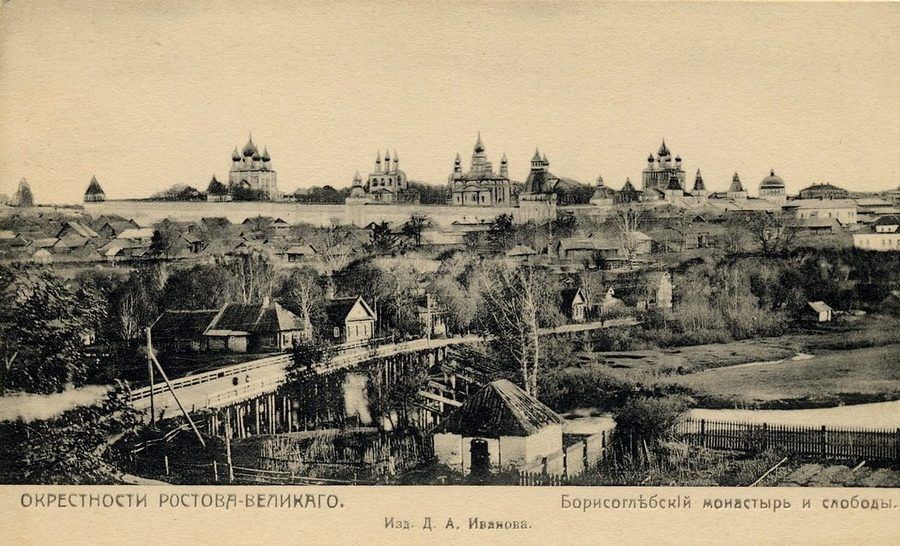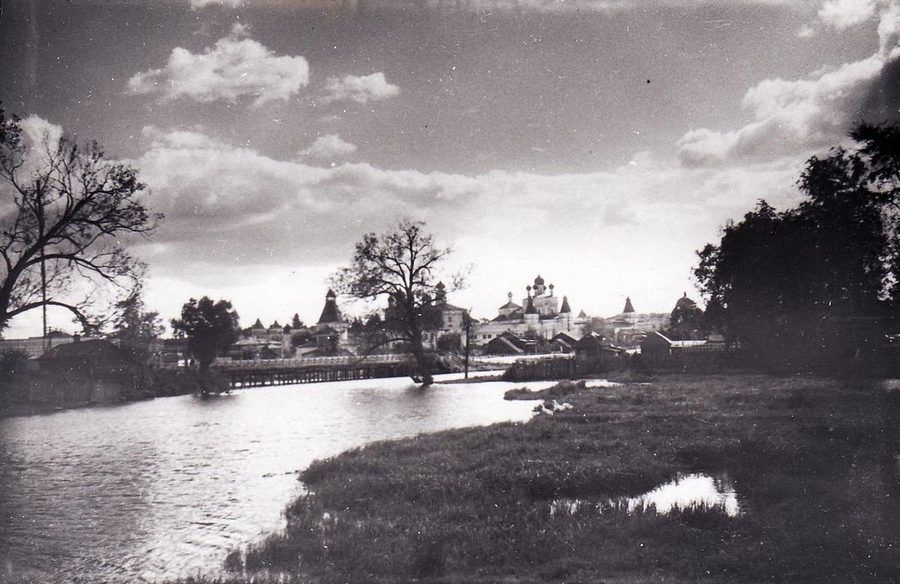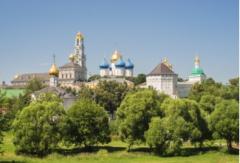History of Borisoglebsky
14th Century
Foundation
In 1363, at the blessing of St Sergius of Radonezh, the monks Fyodor and Pavel founded the Borisoglebsky Monastery near Rostov on the River Ustye. As its name suggests the monastery was dedicated to Ss Boris and Gleb, Russia's first native saints. The present day town of Borisoglebsky is also considered to have been founded in 1363 as it arose around the Borisoglebsky Monastery as a settlement (sloboda) known as Borisoglebsk.
15th Century
Originally part of the Rostov Principality, Borisoglebsk eventually became part of the Moscow Grand Principality in the 15th century and its monastery became a favourite among the grand princes in Moscow. During the Moscow Civil War (1425-1453), Grand Prince Vasili II sought refuge at the monastery and his son Ivan (later Grand Prince Ivan III) was christened there in 1440. This service would be remembered by Moscow's royal family who often lavished great gifts on the monastery.
16th Century
Borisoglebsky Monastery and its surrounding settlement continued to grow during the 16th century and construction on its first stone buildings and walls was started in 1522 by Rostov master-architect Grigori Borisov. The monastery benefited further during the reign of Tsar Ivan the Terrible, who visited the monastery three times and gave the monastery donations of land and treasures, making it one of the richest monasteries in the land.
17th Century
St Irinarchus the Hermit
One of the most famous monks to live at the Borisoglebsky Monastery was the hermit Irinarkh, who was later canonised as St Irinarchus (Irinarkh) the Hermit. In around 1577 Irinarkh at the age of 30 gave up his old life to live in a tiny monastic cell in solitude and to wear chains and fetters. Such was Irinarkh’s status as a holy man that in 1612 Prince Pozharsky and his People's Volunteer Army stopped at Borisoglebsky Monastery on route to liberate Moscow from Polish interventionists to get Irinarkh’s blessing for the campaign. Irinarkh died shortly afterwards in 1616.
Building Programme
In the second half of the 17th century further construction work was carried out under the building programme of Metropolitan Jonah (Iona) Sysoevich, who was also responsible for much of the building work in nearby Rostov.
18th and 19th Centuries

In 1764, during her policy of secularisation of church lands, Empress Catherine the Great granted the land around the monastery to her favourite Count Grigory Orlov. The settlement later became the location of a famous market that would be held on the celebration days of Ss Boris and Gleb outside the walls of the Borisoglebsky Monastery.
20th Century

In 1924 the Borisoglebsky Monastery was closed and turned into a museum. In 1962 the settlement of Borisoglebsk was awarded the status of an urban type settlement (posyolok gorodskogo tipa) and was renamed Borisoglebsky. In 1994 an agreement was reached between the museum and the Church, whereby the monastery would be shared and used both for its original purpose and as a museum.


 History
History